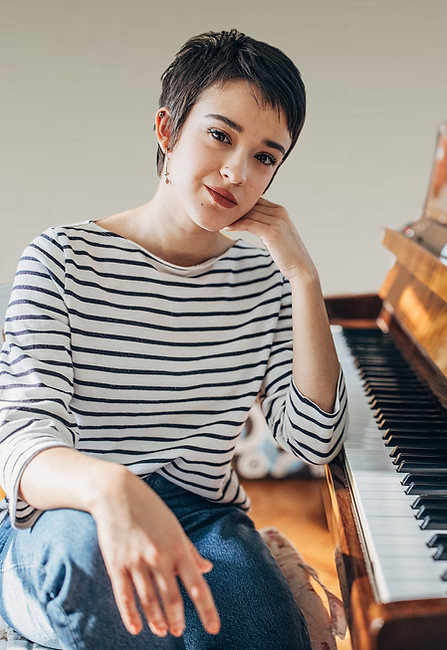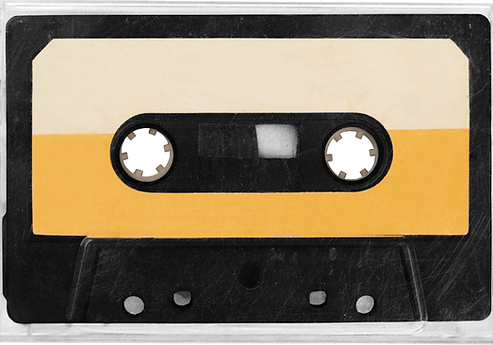COMPOSITION FOR TEACHERS
Monday-Thursday, September 22-25, 1pm EDT
Empower your students to create original music
This 4-day course is designed specifically for music teachers who want to confidently guide students through composing a piece, even if they've never written music themselves.
You’ll learn step-by-step methods, creative tools, and ready-to-use resources to integrate composition into your lessons, whether you teach in a studio, classroom, or hybrid setting.
By the end of the course, you’ll walk away with:
-
A complete framework for teaching composition
-
Student-tested templates you can use now
-
Skills to help students express themselves musically
-
Confidence to nurture creativity in every student

WHY TEACH COMPOSITION?

Stand out from the crowd!
There is a lot of competition in the music lesson scene. Adding composition to your studio gives parents a reason to book their lessons with you! Many teachers have their students write short melodies or chord progressions, but how many do you know that have even their youngest students writing 16-measure pieces with at least two themes, inspiring melodies, harmony AND a music video to share with family and friends? This is the reason my waiting list is so long!
Combat perfectionism
Do you have students that only focus on their mistakes? We live in a society that glorifies perfection. In the music world, it's Beethoven level genius and Liszt level showmanship. One of my students struggled to play at all in our lessons because she was terrified of making mistakes. She was sure she couldn't compose! After some coaxing, she created a beautiful melody using my two-note motive method. Once she got started, her excitement increased and she realized that she was creating something beautiful. She wrote "Dreamcatcher", a piece with Alberti bass and a stunning melody. My favorite part starts at 0:16!

.png)
Make theory stick
Have you ever had a song stuck in your head? That's what composition does for theory. My students know chord qualities, inversions and cadential patterns inside and out. They pay attention to phrase, dynamic, articulation and tempo markings because they've learned that these symbols give you power over an audience as a composer and as a performer. I've never assigned a theory worksheet in my life. If you want your students to understand music, teach them how to create it with the magic sauce of composition!
WATCH MORE COMPOSITION VIDEOS HERE








WHAT'S INCLUDED IN THE COURSE
1
Four live meetings that provide all the tools you need to start composing with your students by the end of the week. We'll compose together so you can test out the techniques with other teachers before you try them with a student. Watch unedited videos of Amanda using the course techniques with her students. All meetings will be recorded and accessible in the Teacher Access page on the website.
2
Ready-to-use teaching toolkit including: MuseScore printable shortcuts, Melody Manipulations page, composition starter prompts, MuseScore template, group and solo project planners, Canva composition video templates, student composition recital ideas and the Stuck Student Troubleshooting Guide.
3
Review chord theory and the psychology of cadences through student compositions. Tips for integrating composition into any curriculum including public school music programs. Discuss student progress using 5 years of compositions by a single student. Solutions for common problems with key changes, symmetry and dissonance.
WHAT OUR TEACHERS, PARENTS & STUDENTS SAY
WHY I TEACH COMPOSITION

EDUCATION IN CRISIS
98% of kindergarten age children test as creative geniuses, according to a NASA study. At thirty years old, that number drops to only 2%.
Composition preserves a child's creativity into adulthood while developing an understanding of tempo, dynamics, musical form, tonality, melody and harmony.
Adding composition to my studio has transformed the lives of my students by increasing their emotional intelligence and showcasing their innate abilities as musicians. Parents are more engaged in their learning and my studio has a two year waiting list.
CHECK OUT THE COURSE SCHEDULE
DAY 1
-
Define your why
-
Prepare your score template
-
MuseScore shortcuts and videos
DAY 2
-
Setting parameters
-
Deep dive into melody creation
-
Melody manipulation
DAY 3
-
Adding color
-
Psychology of cadences
-
Helping students succeed
DAY 4
-
The Canva miracle
-
Building a community
-
The stand out studio

